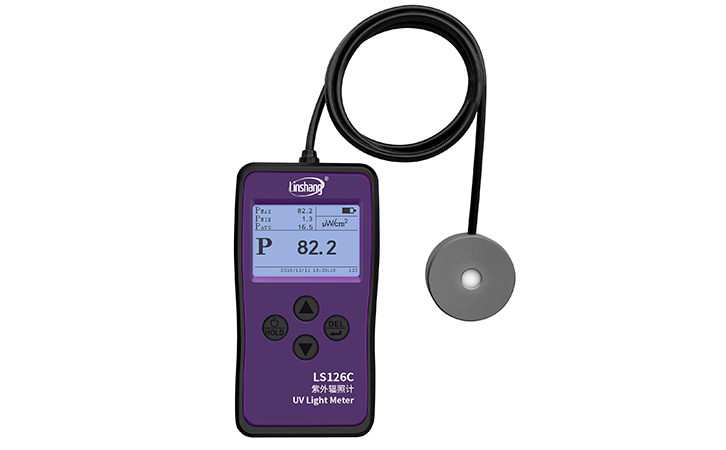Monitoring Radiation Intensity of UV Lamps
When monitoring the ultraviolet germicidal lamp, if the radiation intensity of the lamp is lower than the specified standard, it should be replaced in time. The intensity is monitored by an ultraviolet intensity detector and the specific conditions are recorded.
The usual method of disinfecting the indoor air of the hospital and the surface of the object is to sterilize it with ultraviolet light. However, in the medical quality inspection, there are some misunderstandings and potential hidden dangers in the management of ultraviolet disinfection, which has greatly affected the sterilization effect of ultraviolet lamps. Especially in the detection of the radiation intensity of ultraviolet lamps, it is necessary to regularly use the ultraviolet intensity detector LS126C to monitor the intensity of the ultraviolet lamps. Understanding and controlling these factors is the key to ensuring the ultraviolet disinfection effect.
If necessary, it is necessary to replace the ultraviolet lamp with insufficient radiation intensity in time. The sterilization effect of the general ultraviolet lamp is directly related to its radiation intensity and irradiation time. Usually, the irradiation is performed under the condition that the radiation intensity of the 30W ultraviolet lamp is not less than 70uW/cm2. If the radiation intensity of the lamp is slightly lower, it is necessary to appropriately extend the irradiation time, which can make up for the sterilization effect.
When the intensity of the ultraviolet lamp is less than 70uW/cm2 and it is not replaced in time, it is a misunderstanding that the extended irradiation time can make up for the insufficient radiation intensity and has no time limit for extension. When the monitoring has proved that the UV lamp radiation intensity is lower than the specified standard, it should be replaced in time.
During the monitoring and inspection, it was found that some cumulative use time of UV lamps has been found for 10000h, but the detected radiation intensity is still greater than 70uW/cm2, while some UV lamps use less than 300h, but the detected radiation intensity is less than 70uW/cm2, this is not a quality problem with UV lamps. According to the investigation, this situation is caused by the actual disinfection time and registration inconsistency. The purpose is to cope with the inspection, but it has been registered without disinfection, resulting in a large number of records. Disinfection records are used as a measure of the quality of disinfection.
The effect of ultraviolet light sterilization is also significantly affected by environmental factors. Generally, the ambient temperature is 20-40 ° C, the relative humidity is 60%, and the surface of the lamp tube is relatively clean and the disinfection effect is relatively guaranteed.
At the same time, the hospital should establish a comprehensive hospital infection management system and disinfection management system. The infection management department will use a registration card for each UV lamp in the hospital, and implement unified management to ensure that a lamp is replaced during monitoring. A lamp with a radiation intensity that does not meet the standard guarantees the maximum disinfection effect.
The problems in ultraviolet sterilization are mainly caused by manual operation, it is difficult to effectively monitor the quality, and the operation technique should be improved. Wireless detection of UV intensity can be achieved using a digital UV intensity detector. For lamps with a radiation intensity greater than 80uW/cm2 in use, it can be detected once every two months using a UV intensity detector and the radiation intensity is less than 80uW/cm2 once a month. The date, number, radiation intensity, lamp specifications, disinfection time accumulation, and problems in use should be recorded in detail.
